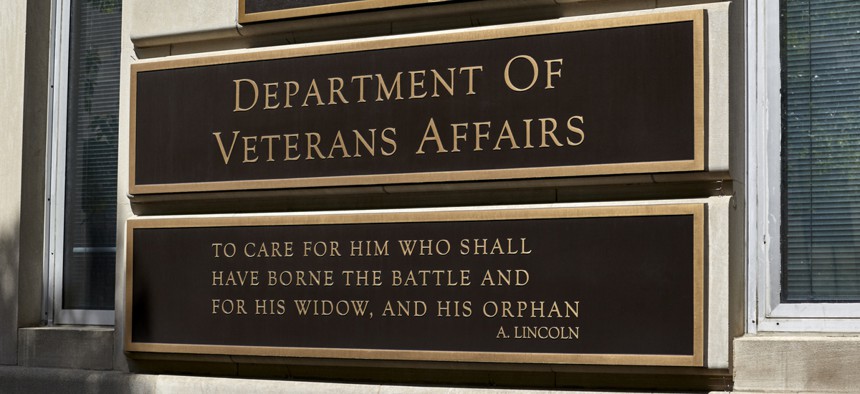How the Veterans Affairs Department is ‘Hardwiring’ Customer Service into Everything

Pamela Au/Shutterstock.com
VA is on a mission to improve the veteran experience across every service it provides.
Since its inception in 1930, the Veterans Affairs Department has delivered health care and other services to tens of millions of veterans and their loved ones, caring for those who have borne the battle in defense of the nation.
Yet in its storied history, VA has never emphasized customer experience like it has in recent years, building on the instantiation of a Veteran Experience wing at the close of the Obama administration to—as of mid-May—literally codifying veterans experience principles into VA’s core values.
In an interview May 21 with Nextgov, Dr. Lynda Davis, chief veterans experience officer at VA, described the rule as a watershed moment across the government, noting it was perhaps the first time a federal agency essentially baked customer experience into its mission.
“In order to keep the secretary’s commitment to customer service, we had to hardwire this customer service culture into everything we are doing,” Davis said. “That means permanently that VA will be considering customer service as foundational to its operations and policy.”
Policy doctrines and rules are mere words, but VA has spent the better part of four years implementing a wide range of changes designed in direct response to veteran feedback. Davis said the agency created a human-centered design analysis of the “moments that matter” to tens of thousands of veterans across their distinct healthcare journeys, locating areas where VA performed well along with pain points for veterans.
Perhaps counterintuitively, some of VA’s large-scale changes were in response to seemingly minor problems encountered by vets. For example, the VA has partnered with outside veteran organizations to provide volunteer personnel at the more than 100 VA medical centers across the country. Called the Red Coat Ambassador Program, volunteers wearing easy-to-see red coats will be the first people many veterans see upon entering VA facilities, and they “are there, ready to engage as non-employee companions to help make sure someone coming into a hospital knows how to find their way around,” Davis said. The program was a result of analysis data suggesting some veterans often think VA medical centers can be confusing, daunting or stressful places to visit.
The navigation guide is a physical embodiment of VA’s digital navigation improvements, which included the relaunch of va.gov in November. The website is a single point portal for every veteran service. In a similar effort, VA created the White House VA Hotline in June 2017 to connect veterans with customer service agents 24 hours a day, 365 days a year. As of May 14, agents answered more than 250,000 calls from the hotline, which Davis said will serve a model for call centers moving forward.
“It gets back to ease of navigation,” Davis said. Whether it’s through websites, contact centers or physically literally walking into the building.”
VA has also provided “Own the Moment” training to more than 50,000 frontline Veterans Health Administration employees covering effectiveness, ease and invoking positive emotion. Davis said the training borrowed from best practices in business, industry and health care, culminating in an actual curriculum.
“What we do in Our the Moment training is make sure every single person is trained in how to do customer service, and then with the call center or website, make sure they know how to help vets get additional access to info and services,” Davis said.
VA is also improving the way it solicits feedback from veterans, allowing real-time responses from veterans through its Signals program. Any vet who uses VHA outpatient services is given the option to sign up for receiving a voluntary survey through email. That feedback is then shared with relevant parties, such as hospital directors, “so we know how veterans feel in near real-time,” Davis said.
So far, VA has received more than 3 million feedback responses through Signals, allowing the department new dimensions of qualitative and quantitative sentiment data. And those taking the surveys have reported elevated levels of trust, Davis said—up to 88 percent—or four times higher than the public’s overall trust in government.
Meanwhile, Davis—who reports directly to VA Secretary Robert Wilkie—has maintained a modest staff size of approximately 120 employees, wide-ranging in expertise and focusing on everything from data analytics to community-based support. VA is also a close White House partner, where it is a leading agency for contact center modernization. While VA is happy to partner with outside organizations and employs numerous contractors, especially in technology, the brunt of the customer experience culture change is happening with VA employees at the helm.
“We start with, ‘What does the customer want,’ and we design what the customer wants and the behaviors we have to have,” Davis said. “Then we design training and curriculums around the employees themselves. The ‘train your trainer’ model cannot be sustained if you’re only using outside contractors, and we believe it is best to have employees develop content, own it, agree with it and buy into it.”
NEXT STORY: Quick Hits



